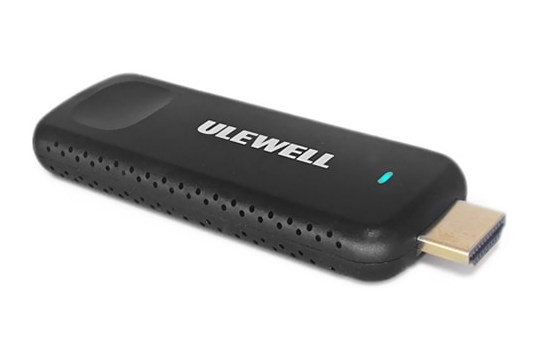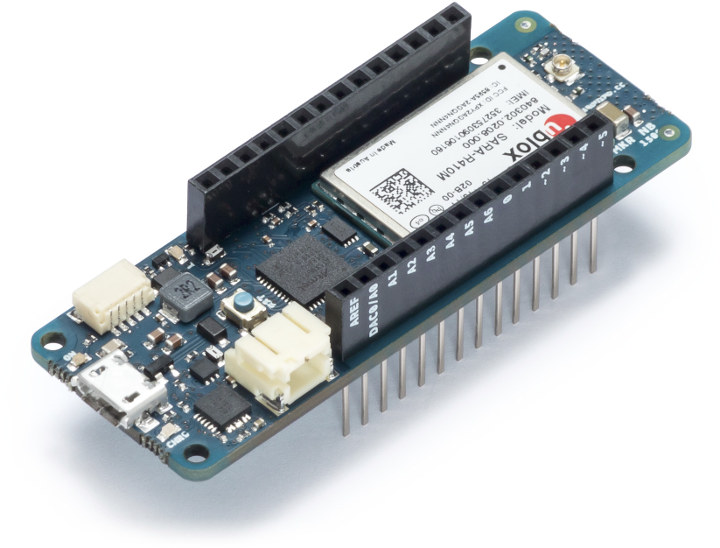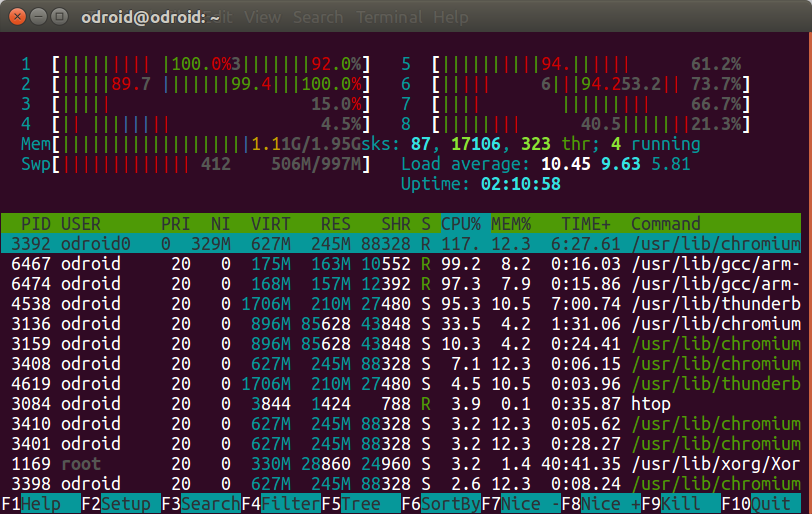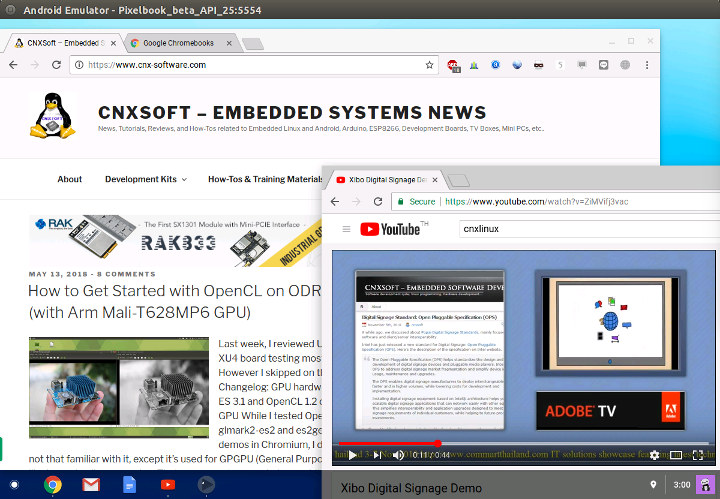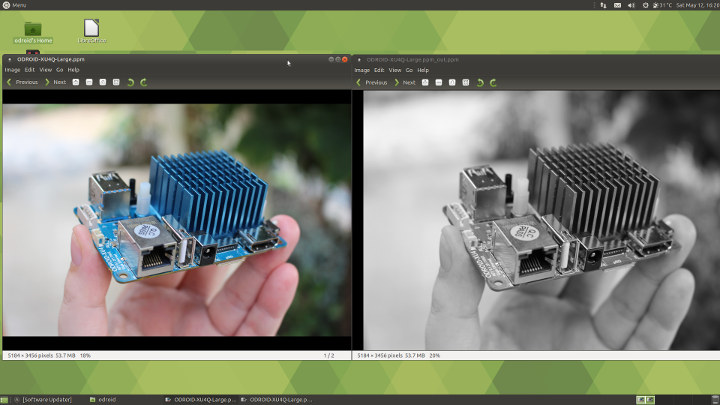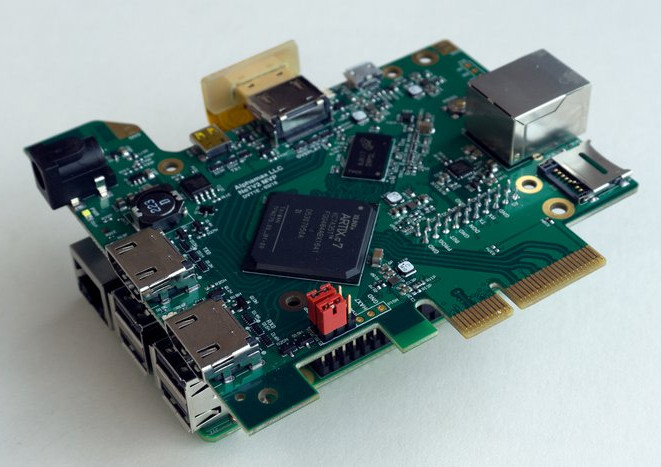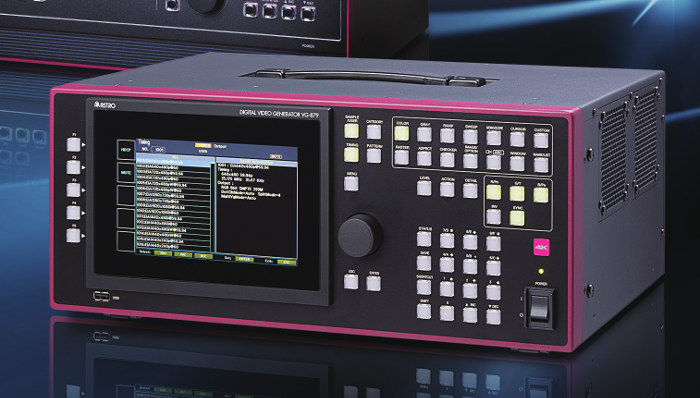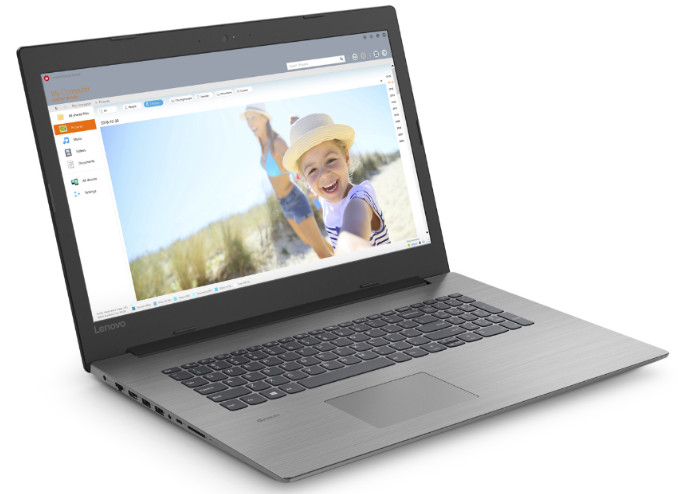While we’ve already covered many Rockchip RK3328 TV boxes and development boards, if you want a TV stick form factor the choice becomes much more limited. So far I was only aware of Rikomagic RKM V3 , but today I’ve come across ULEWELL Z28 MINI, selling for about $40 on Aliexpress with 2GB RAM, 16 GB storage, HDMI 2.0a, and a USB 3.0 port. ULEWELL Z28 MINI TV stick specifications: SoC – Rockchip RK3328 quad core Cortex A53 processor @ 1.5 GHz with Mali-450MP2 GPU System Memory – 2 GB RAM Storage – 16 GB eMMC flash Video & Audio Output – HDMI 2.0a up to 4K @ 60 Hz with HDR10 and HLG support Video Codec – 4K VP9, H.265 and H.264. 1080p VC-1, MPEG-1/2/4, VP6/8 Connectivity – 802.11 b/g/n WiFi (2.4 GHz), Bluetooth 4.0 USB – 1x USB 3.0 port Misc – Power button and LED Power Supply […]
Arduino Introduces Two New IoT Boards – MKR WiFi 1010 (ESP32) and MKR NB 1500 (NB-IoT + eMTC)
Arduino introduced its MKR family of breadboard compatible maker boards with MKR1000 featuring an Atmel SAMD21 microcontroller combined with a Microchip WINC1500 WiFi module. The board was followed by MRKZero without wireless connectivity, then MKRFOX1200 Sigfox board, and finally MKR WAN 1300 & MKR GSM 1400 boards at the end of 2017 with LoRaWAN and 3.75G cellular connectivity. The company has now launched two new boards: Espressif ESP32 based MKR WiFi 1010 with WiFi and Bluetooth, and MKR NB 1500 equipped with an NB-IoT & LTE CAT M1 module. Arduino MKR WiFi 1010 MKR WIFI 1010 is an evolution of the MKR1000 board, and is equipped with a U-Blox ESP32 module. Preliminary specifications: MCU – Microchip SAMD21 Cortex-M0+ MCU @ 48 MHz with 32KB SRAM, 256 KB flash memory Wireless Connectivity – 2.4 GHz 802.11 b/g/n WiFi and Bluetooth 4.2 LE via U-blox NINA-W10 Series module based on ESP32 processor. […]
Running out of RAM in Ubuntu? Enable ZRAM
Whenever I ran out of RAM on a Linux system, I used to enable swap memory using the storage device to provide an extra bit of memory. The main advantage is that it’s does not require extra hardware, but come at the cost of much slower access, and potential issues or wear and tear, unless you only use it temporary. This week-end, I compiled Arm Compute Library on ODROID-XU4Q board, and the first time it crashed because the system ran out of memory, so I enable swap on the eMMC flash module to restart and complete the build successfully. However, I was told it would have been better to enable ZRAM instead. So what is ZRAM? Wikipedia explains: zram, formerly called compcache, is a Linux kernel module for creating a compressed block device in RAM, i.e. a RAM disk, but with on-the-fly “disk” compression. So it’s similar to swap, expect […]
How to Run Chrome OS in Android Emulator
While it’s possible to run the open source Chromium OS in your computer or a virtual machine, AFAIK there was only was way to test Chrome OS: purchasing an actual Chromebook, or other device running the operating system. But this week-end, I read the news that Chrome OS was now available in Android Studio, and you can run in Android Emulator while emulating a Pixelbook, so I gave it a try by following the instructions on Android Developer website. If you haven’t done so already, we first need to install Android Studio. I’m running Ubuntu 16.04 in my computer, but this will also work in Windows and Mac OS X. After download the IDE zip file, we can extract it… and then open a console, go into “{installation home}/bin” and run the program:
|
1 |
./studio.sh |
After a few seconds, we got into Android Studio 3.1.2 welcome screen. We can now click […]
How to Get Started with OpenCL on ODROID-XU4 Board (with Arm Mali-T628MP6 GPU)
Last week, I reviewed Ubuntu 18.04 on ODROID-XU4 board testing most of the advertised features. However I skipped on the features listed in the Changelog: GPU hardware acceleration via OpenGL ES 3.1 and OpenCL 1.2 drivers for Mali T628MP6 GPU While I tested OpenGL ES with tools like glmark2-es2 and es2gears, as well as WebGL demos in Chromium, I did not test OpenCL, since I’m not that familiar with it, except it’s used for GPGPU (General Purpose GPU) to accelerate tasks like image/audio processing. That was a good excuse to learn a bit more, try it out on the board, and write a short guide to get started with OpenGL on hardware with Arm Mali GPU. The purpose of this tutorial is to show how to run an OpenCL sample, and OpenCL utility, and I won’t go into the nitty gritty of OpenCL code. If you want to learn more […]
NeTV2 Open Video Development Board Works with Encrypted and Unencrypted Video Streams (Crowdfunding)
Chumby NeTV was an open source hardware Linux IPTV media player based on a Xilinx Spartan FPGA and a Marvell Armada 166 processor, and unveiled in 2011. Many years have passed since then, and now Bunnie Huang has come up with a new version. The NeTV2 development board is also optimized for open digital video application, but based on a more powerful Xilinx Artik-7 FPGA, and a Raspberry Pi 3 B+ can be added for things like seamless JTAG configuration and overlay video generation. Key features and specifications: FPGA – Xilinx Artik-7 XC7A35T-2FGG484 (available with XC7A50T option during campaign only) System Memory – 512 MB RAM, 32-bit wide DDR3-800 Storage – micro SD card, 8 MB SPI flash Video Ports 2x HDMI type A inputs 1 x HDMI type A output 1 x HDMI type D output. One input/output pair configured for in-line ‘NeTV mode’ video filtering. Max Video Bandwidth […]
Astro Design HDMI Test Equipment Supports 8K @ 120 Hz
8K media players and 8K TVs are coming, but if you develop one of those products how do you test them since 8K players/TVs are not available just yet. Answer: Test equipment. Astro Design offers just that with their VG-879 digital video generator, as well as their VA-1844A HDMI protocol analyzer. VG-879 digital video generator key features: 4K/60p is transmitted by one channel of 12G-SDI. Max.4 slot-type interface units can be selected from 12G-SDI, HDMI2.0b 3G or 6G, DisplayPort 1.2a, V-by-One and Analog. By synchronizing 4 or 2 units of VG-879, 8K/120p or 8K/60p signals are supported. (8K/120p by V-by-One HS, 8K/60p by V-by-One HS and HDMI.) HDMI 2.0b test functions supported EIA CEA-861-F Timing Format including 4K/50, 60p, YCBCR 4:4:4/4:2:2/4:2:0 timing. SCDC parameter change and status display. ITU-R BT.2020 color bar and video output setting 4K6G with Scrambling Enable setting CEA-861.3 HDR (High Dynamic Range) InfoFrame setting HDR Test Patterns supported […]
Lenovo IdeaPad 330 Gemini Lake Laptops Sell for $250 and Up
We’ve previously seen companies unveil Gemini Lake laptops but at price points ($400 to $600) that did not seem right, considering Gemini Lake (GLK) processors should cost about the same as the ones from the previous generation (Apollo Lake). Lenovo has now introduced IdeaPad 330 laptops based on Intel GLK processors with pricing more in line with expectation, as the device will sell for as low as $250 with an Intel Celeron N4000 dual core processor. I won’t list all detailed Lenovo IdeaPad 330 specifications, since it’s actual a family of laptop with a long list of different models with Intel Celeron N4000/Pentium N5000 Gemini Lake processors, but also more powerful Core i3/i5/i7 processors. The company still provided some key features for the laptop, as they will comes in three anti-glare screen display sizes at 14, 15 and 17″ respectively in HD, HD+ and full HD resolution options. Let’s pick […]


